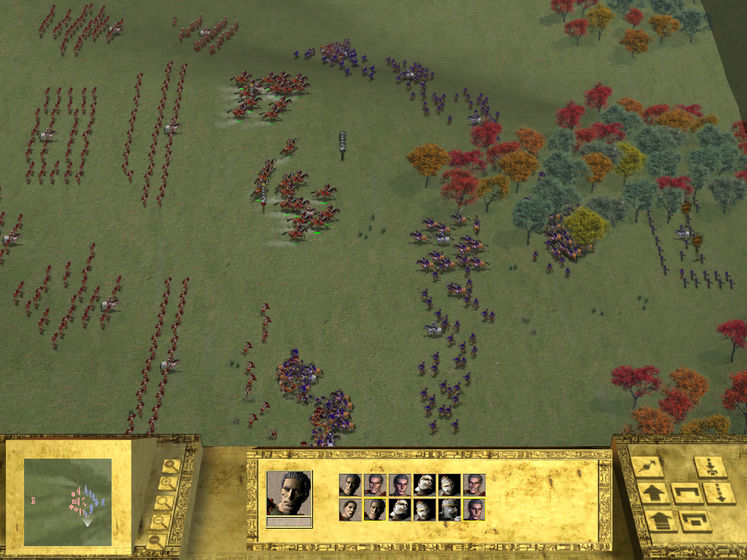Si: Please introduce yourself to our readers.
Andy Canivet: Hi Strategy Informer. I’m Andy Canivet, Magitech’s Writer / Researcher. I write (and/or edit) our documents and in-game text, and help out in the design and research.
Si: How would you describe Strength & Honour in short?
Andy Canivet: Strength & Honour is a game of empire building and battlefield warfare set in the ancient world (circa 220 BC). In world mode, you run a major nation by interacting with your characters-you’ll use them to help you in diplomacy, city building, and military operations; but you’ll also have to keep them happy. In battle mode, you control an army in a single battlefield engagement (when armies meet in world mode).
Si: There are 7 nations in the game. Please tell us little about them.
Andy Canivet: There’s 7 playable civilizations in the Strength & Honour-Gaul, Rome, Carthage, Egypt, Persia, India, and China. We also plan to have an 8th, non-playable civilization-the Huns.
Each civilization will have unique army units and/or tactics. Most armies will have some kind of light infantry (usually spearmen), heavy infantry (usually swordsmen), and cavalry. Some armies will have access to extra cavalry, cavalry archers, or elephants. Some civilizations will have more sophisticated formations and chain of command than others, as well.
Some civilizations will have several nations that belong to it, each with their own leader, characters, cities, and desire to expand. For example, there are 7 nations in China at the start of the game. They all fight with Chinese armies and build Chinese buildings in their cities, but they exist as separate countries and will compete with each other for control of the region. Similarly, the Persian Civilization includes Seleucid Persia, as well as several splinter nations (Bactria, Parthia, etc.) and independent city states.
Si: How will the battles look?
Andy Canivet: Battles will be pretty epic, with about 3,000 troops on the field. Each army will have 12 divisions with approximately 80 men each. The armies will meet on huge 3D terrain maps, complete with hills, trees, rivers, and other features. Most battlefields will be large enough to accommodate up to four armies. There are no plans right now for urban battles.
Using the terrain is extremely important in battle. Hills affect movement and fatigue-a cavalry division charging uphill will move slowly and tire quickly. The same division going down a hill or charging over flat ground can become an unstoppable force-crushing any infantry that get in their way. Trees and rivers also affect movement & visibility. There are also weather effects which will influence the battle.
Formations are just as important as terrain-you’ll have to choose the best one for the situation. First you set up your formation in the initial deployment, but you can change your formations in battle to keep pace with the action. Each division has a formation, and the army as a whole has a formation, too. Each level of formation has an impact on the battle.
Also, when you deploy your army before battle, you can also set up detachment divisions, which can flank or ambush the enemy by waiting out of view.
Si: Character will play a major part in diplomacy, commanding armies, managing cities. Will we be able to choose and edit the characters available in the game? Can their personalities be molded by player interaction with that character?
Andy Canivet: Character interaction is extremely important in Strength & Honour. When you start a game, you’ll pick from a set of pre-generated (often historical) characters to be your nation’s ruler
Of course, in the beginning there will also be a group of characters filling the various roles needed to run the empire. As the game progresses, you can reward or replace characters, and recruit new ones. The decisions you make will affect the kinds of recruits and visitors you attract, and will also have an impact on the ruler’s personality.
If you consistently reward your most skilled characters, then you’ll attract skilled people-but you’ll also attract people who may be willing to sell those skills to the highest bidder. If you consistently reward your most loyal and senior characters, then you’ll attract people who will be loyal (even if their skills may be lacking).
You’ll also have to watch out for various characters’ ambitions and allegiances. Some characters will get upset or even hostile if they aren’t satisfied with their situation. Characters will also form political parties with their own agendas, and who may threaten the ruler’s power (or his/her life) if they aren’t kept happy.
At the end of the game, you’ll be given an evaluation-a kind of final score, describing the kind of person the ruler was, the ruler’s personality, and the vital game statistics and major accomplishments. This evaluation will be based on how you ran the game.
Si: Will there be multiplayer?
Andy Canivet: We’re currently developing on a head-to-head battle mode, where two players will be able to face off on the battlefield.
Si: Do you have any plans for a game editor, for players who wish to create their own battle maps?
Andy Canivet: Right now there are no plans for an end-user game editor.
Si: When will the game be released? Will it hit the shelves in both Europe & USA at the same time?
Andy Canivet: We’re scheduled to complete the project this June, but we’re still looking for a publisher, so we can’t say when the game will be released to the public. We think Strength & Honour has a wide multicultural appeal and we’d like to see it in stores around the world, but this all depends on the publisher.
Si: Would you like to add anything?









